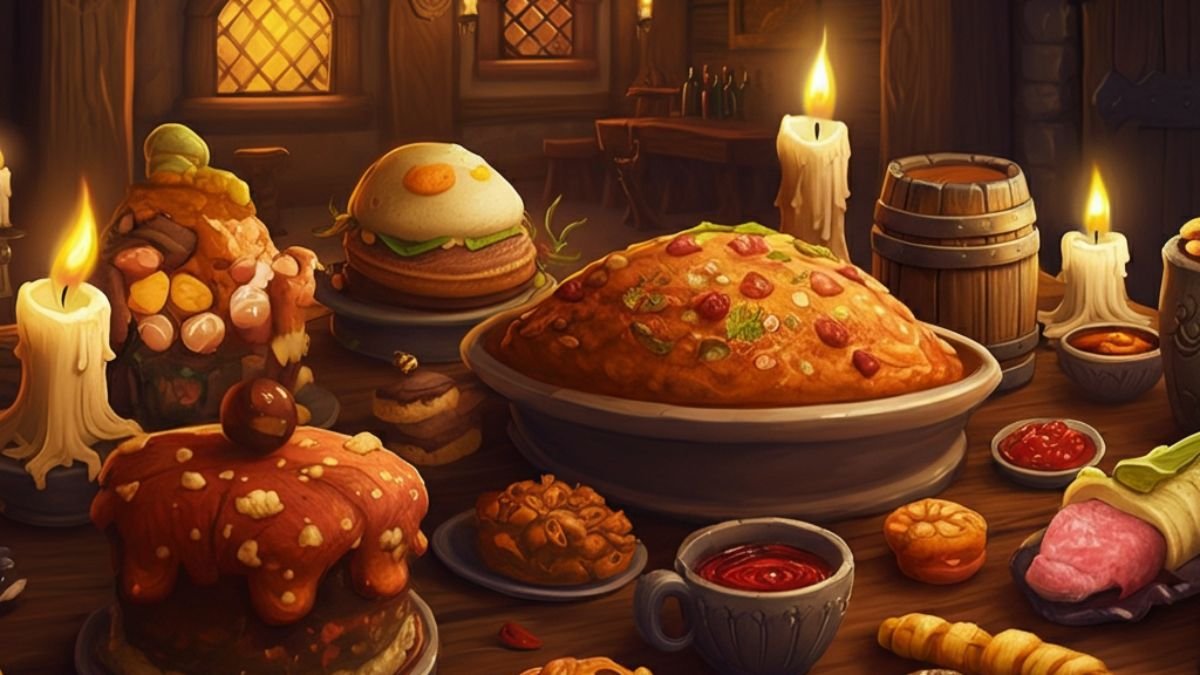Food in Dungeons & Dragons 5e is more than just a mechanic to stave off starvation. From tantalizing treats to hearty meals, food can grant incredible buffs, enhancing your character in ways you might not expect. Understanding how these food buffs interact with your 5e stats is a game-changer, especially for groups that are always on the move (looking at you, touring adventurers). This guide dives into the flavorful world of DnD food buffs, explores their effect on stats, and provides actionable tips to incorporate them into your campaign.
Why Food Buffs Matter in DnD 5e
Food buffs bring an exciting layer to your campaign by adding a tactical edge to how adventurers prepare for challenges. A simple meal crafted by a skilled cook or magical ingredients harvested during your quests can provide substantial boons, from bonus HP regeneration to increases in key attributes like Strength or Wisdom. For adventurers constantly traveling, food buffs can mean the difference between surviving a deadly encounter or facing dire consequences.
Tapping into food mechanics is a way to make campaigns richer and characters more dynamic. From roleplaying a battlefield feast to strategically deciding which party member gets the last slice of enchanted pie, food buffs enable meaningful gameplay moments.
The Connection Between Food Buffs and 5e Stats
Food buffs in DnD 5e commonly affect various character statistics, such as:
- Hit Points (HP) – Temporary bonuses or faster healing rates.
- Ability Scores (Strength, Dexterity, etc.) – Boost essential attributes temporarily for specific tasks.
- Saving Throws – Increase party survivability.
- Skill Checks – Gain advantage on situational challenges like Persuasion or Survival.
Enterprising Dungeon Masters (DMs) often flavor their campaigns by creatively filling gaps in gameplay with recipes, magical meals, or rare ingredients. But to use these effectively, you’ll need to understand their mechanics.
Food Buffs in Core DnD 5e Mechanics
Although 5e doesn’t include an intricate food system in its core books, certain mechanics and features touch on the idea of food buffs. For instance:
1. The “Heroes’ Feast” Spell
Heroes’ Feast is perhaps the quintessential example of a magical food buff. Once conjured, this legendary meal bestows the following benefits:
- Temporary Immunity to fear and poison.
- Advantage on Wisdom saving throws (a boon for resisting spells and magical effects).
- Max HP Increase of 2d10 for 24 hours.
This huge stat boost is ideal for tough battles or roleplaying moments where characters bond over a shared meal before venturing into the unknown.
2. Backgrounds & Class Features with Culinary Components
Some backgrounds and subclasses open opportunities to use food practically:
- Chef Feat (Tasha’s Cauldron of Everything): Bolster allies by cooking specialized treats during downtime. These treats give temporary HP equal to your proficiency bonus.
- Guild Artisan (Cook) background introduces a natural role for the party’s chef.
A DM could easily layer these with additional food-based challenges or boons.
3. Foraged & Gathered Ingredients
Traveling adventurers will often encounter peculiar ingredients—like rare mushrooms in dank caves or mystic herbs in arcane forests. Aligning these finds with Survival checks or cooking proficiencies adds an engaging layer to gameplay. A DM could describe something like:
- Glowing Truffle (Grants +2 to Arcana checks for 1 hour).
- Crimson Peppers (Boosts fire damage dealt by spells or weapons for 20 minutes).
Food buffs give players tangible rewards for exploring and connecting with the world they’re inhabiting.
How to Incorporate Food Buffs to Enhance Gameplay
Adding food buffs into campaigns elevates both mechanics and storytelling. Here are the steps to effectively integrate them:
Step 1: Identify Your Campaign Tone
Decide whether your campaign leans serious, whimsical, or somewhere in between. Food buffs can be hilariously offbeat (e.g., enchanted cookies speaking prophecy) or deeply mythic (reviving characters who consume phoenix-borne nectar). Plan your buffs accordingly.
Example:
- Whimsical tone: “Hopping Treacle Tart” grants +10 ft walking speed but forces players to hop everywhere during combat.
- Serious tone: “Elderroot Stew” boosts saving throws against necrotic effects after consuming it.
Step 2: Balance Buffs with Accessibility
Offering significant power boosts should come with challenges—be it scarce ingredients, specific cooking tools, or detailed preparation time. Keep these mechanics balanced to avoid trivializing dangerous encounters.
Pro tip for balance:
- Temporary HP buffs above 10 should require rare ingredients.
- Advantaged skill checks last for a single session to prevent overuse.
Step 3: Utilize Cooking as a Roleplay Moment
Cooking adds an immersive roleplaying element for traveling parties. One party member might obsessively forage while another experiments with odd recipes. This creates opportunities for character bonding and memorable moments outside combat.
A creative DM could even design a cooking competition subplot that rewards rare recipes!
Step 4: Create a Travel-Friendly Food System
For adventurers constantly on the move, meals need to fit hectic schedules. Incorporate mechanisms like ration upgrades, food preservation spells, or magical packs that keep ingredients fresh.
Step 5: Reward Players for Thoughtful Preparation
Players who seek out high-quality ingredients, rare spices, or expert culinary skill deserve in-game advantages. Tie those rewards to thematic advantages, such as impressing NPCs or increasing buffs.
Example DnD Food Buffs Table (Homebrew Ideas)
| Food Buff | Buff Description | Duration |
|---|---|---|
| Phoenix Egg Omelette | Grants resistance to fire damage | 1 hour |
| Frosted Nectar Cupcake | Reflects cold damage to attackers (1d6) | 30 minutes |
| Golden Honeycomb | Restores 15 HP over time | 10 minutes (heal per turn) |
| Mystic Saffron Tea | Provides +2 to Wisdom saving throws | Until next long rest |
| Ironroot Jerky | Adds +3 to Strength-based skill checks | 1 hour |
Tailoring food buffs like this to the needs of the party is a great way to encourage teamwork and preparation.
Advanced Tips for DMs Utilizing Food Buffs
- Add Mystique to Ingredients: Make players decode recipes or identify magical properties through NPCs.
- Time Constraints: Challenge players with dishes that must be consumed within a specific timeframe before losing potency.
- Kitchen Challenges: Streamline downtime into cooking mini-games, complete with skill checks or contests.
- Cultural Richness: Tie food buffs to local cultures or myths, reinforcing your world-building.
Tools to Use:
- Survival Skill: Essential for foraging edible ingredients.
- Cooking Kit Tool Proficiency: More relevant when players prepare complex meals.
- Identify Spell: Determine if rare ingredients have unique magical properties.
Food Buffs as a Tool to Strengthen Campaigns
Food buffs in DnD 5e offer something for everyone. For strategic players, they provide carefully calculated boosts. Roleplayers love them for the scenario opportunities they spark. For DMs, they are the ultimate homebrew playground. Whether you’re holding chaotic soup competitions or empowering someone with enchanted stew, tying food buffs creatively into your campaign breathes life and depth into gameplay.
Your Next Adventure Awaits
Hungry for more inspired gameplay ideas? Start designing your own DnD food buffs, or bring them into your existing campaign’s travels. Add flavor (literally and figuratively) to your adventure and watch how characters transform over shared meals.

